Just before I left on my RTW trip, my sister and I visited the Gibbon Conservation Center in Santa Clarita Valley, CA.
After sharing photos of orangutans and proboscis monkeys abroad this week, it only seems appropriate to tell you about a similar species in my own backyard.
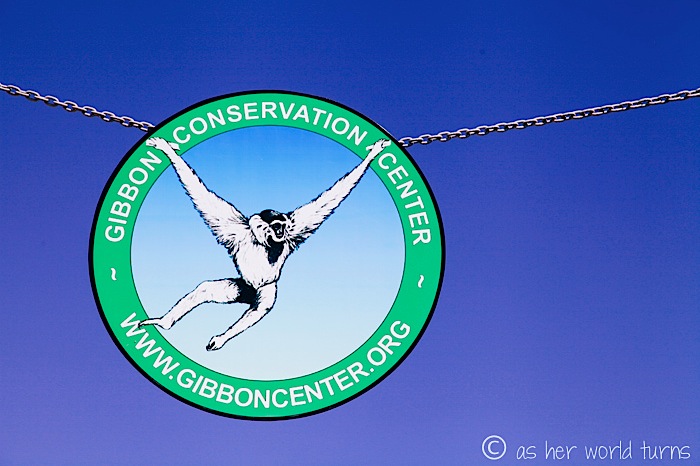
Here’s the details: the Gibbon Conservation Center is open to the public on Saturday and Sunday mornings from 9:30am to 12noon, except for rainy days and holidays. No reservations required. A tour is given at 10am and self-guided tours are available at all times. Admission is $15 for adults, $12 for teens and students, $10 for seniors, and $5 for children ages 6-12. Children 5 and under are free. They accept cash, credit cards, and checks.
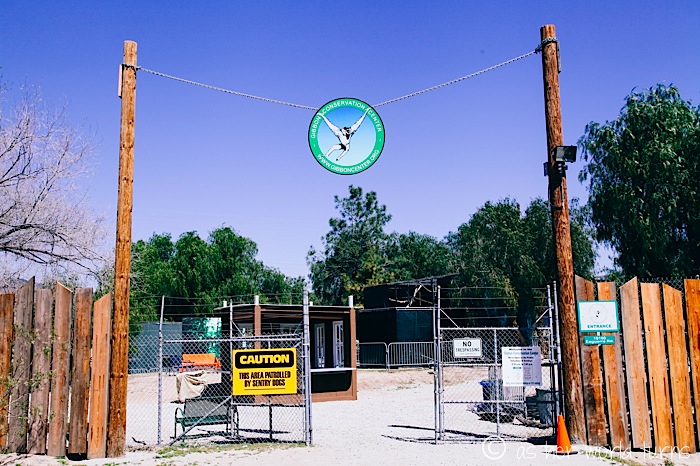
My sister and I simply show up. We’ve missed the tour but it’s fun to walk around on our own. They provide a guide listing all of the gibbons here by name, age, and location.
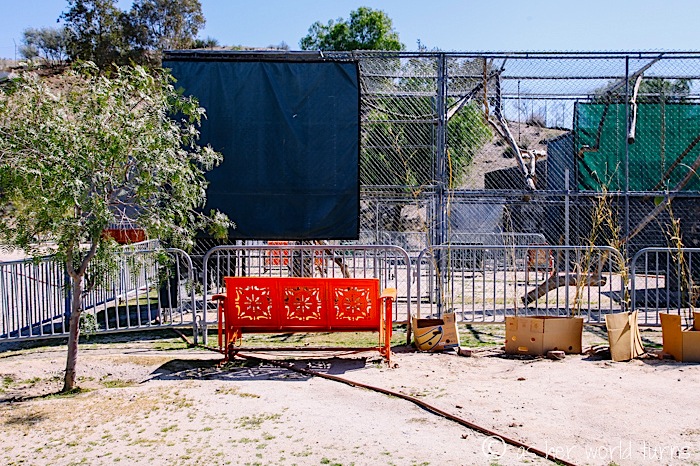
I love these colorful metal benches, in evidence around each giant cage.
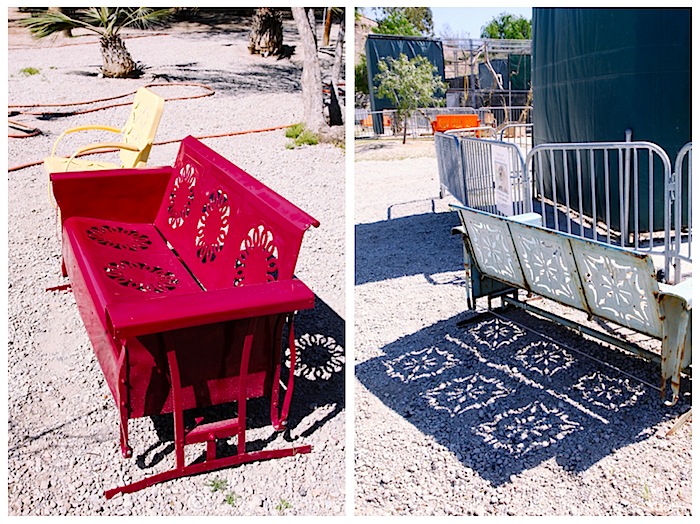
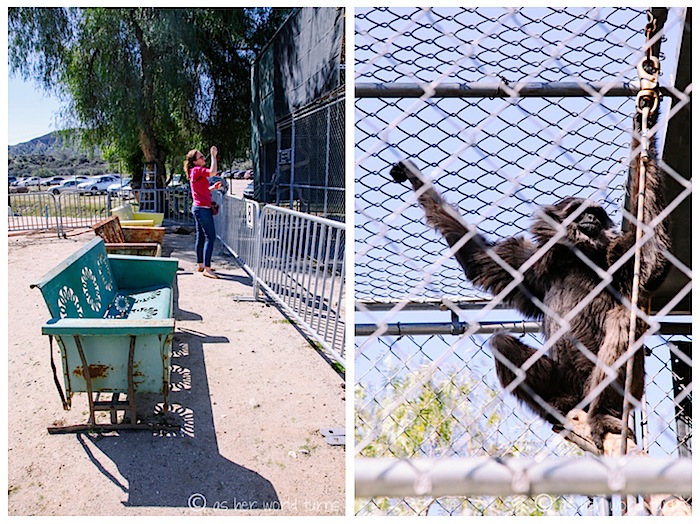
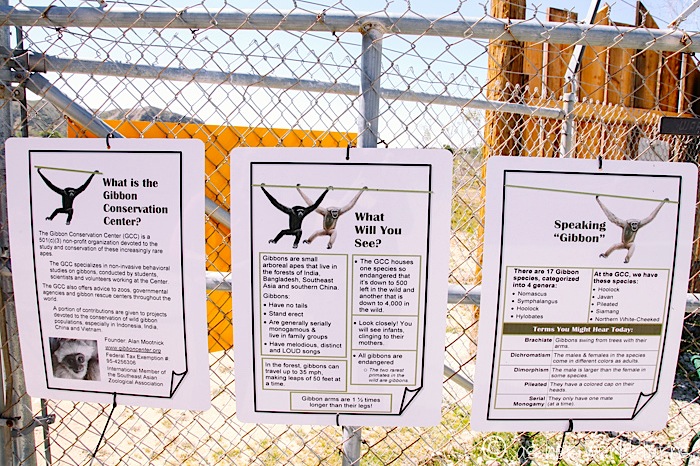
Gibbons are apes and generally live in a tropical rainforest climate in areas like India, China, Thailand, Indonesia, and Borneo. According to Wikipedia, they are considered ‘lesser apes’ (compared to the great apes: chimpanzees, gorillas, orangutans, bonobos, and humans) because they are smaller, exhibit low sexual dimorphism, do not make nests, and have an anatomical resemblance closer monkeys than great apes. However, like all apes, gibbons have evolved to become tailless.
Depending on species and gender, gibbons’ fur coloration varies from dark to light to brown shades. Females tend to be lighter and the males darker.
Gibbons also display pair-bonding, or serial monogamy, unlike most of the great apes.
Major thanks to Wikipedia for all of the above info.
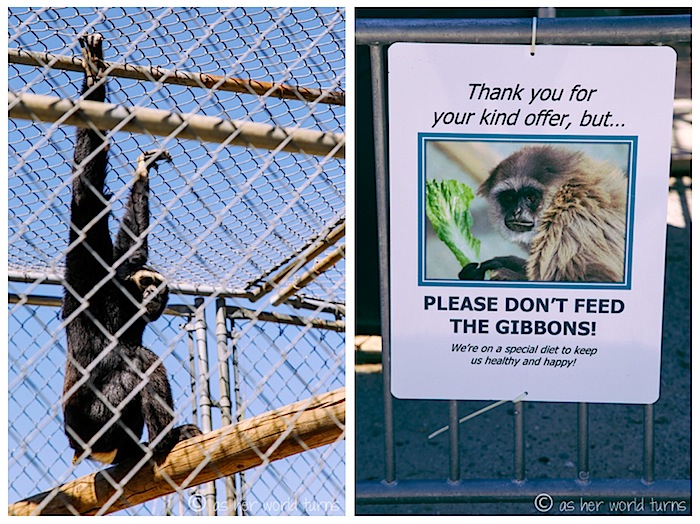
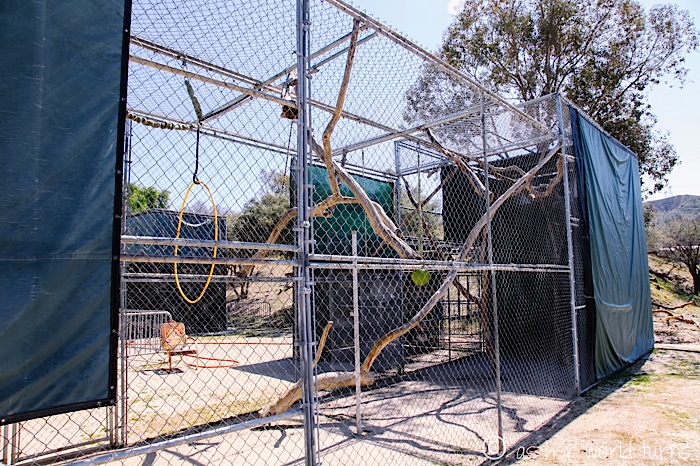
The cages at this facility are quite large, allowing the gibbons ample room to swing around and play.
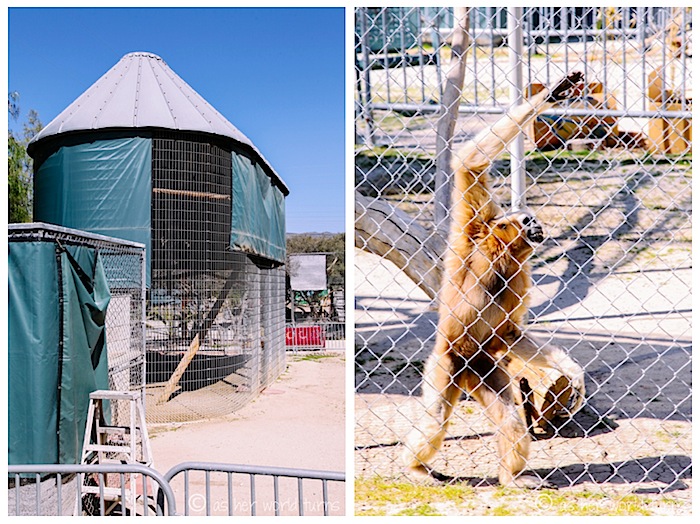
I believe that’s a female Northern White Cheeked Gibbon above right and below left.
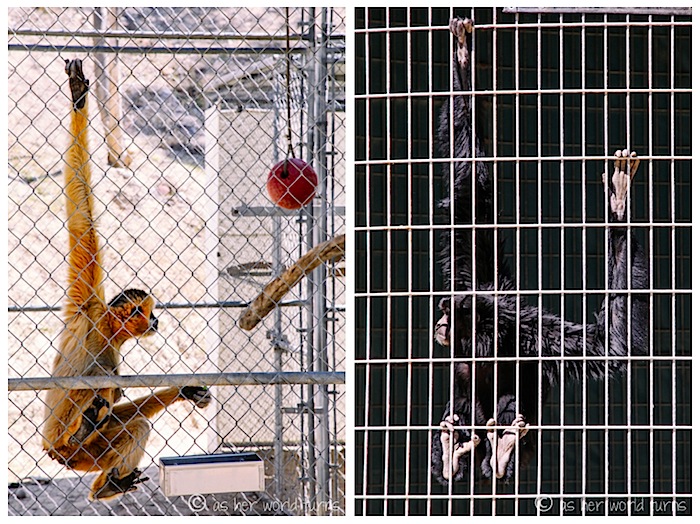
And I think that’s a Siamang gibbon above right and below left.
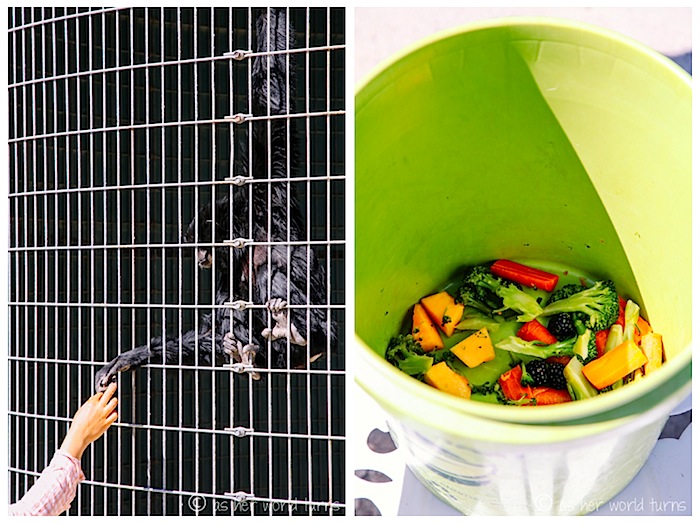
There are regular feedings and we watch employees bring over fresh fruits and veggies for the gibbons.
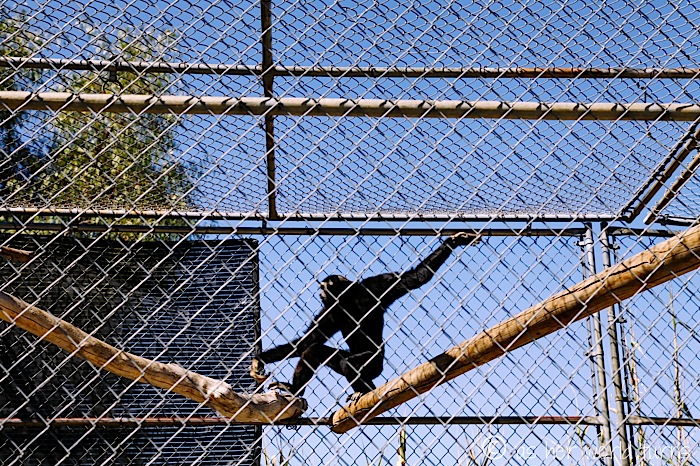
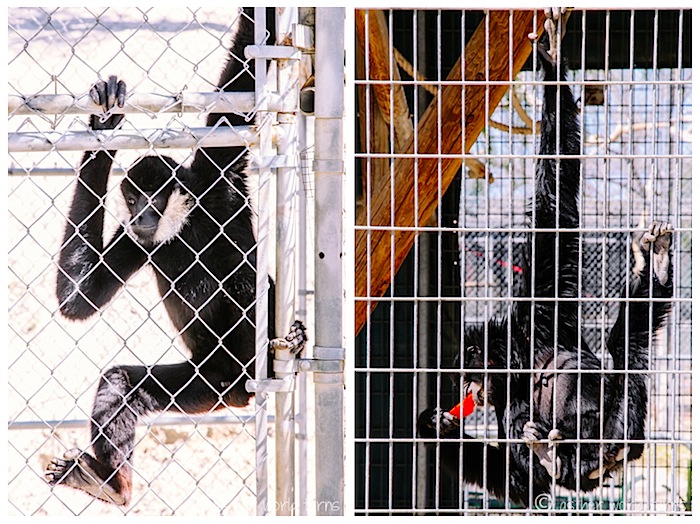
Above left is a male Northern White Cheeked Gibbon. I believe that’s a Siamang gibbon on the right.
There are a few pairs of mommas and baby gibbons. It’s sweet to see them interact:
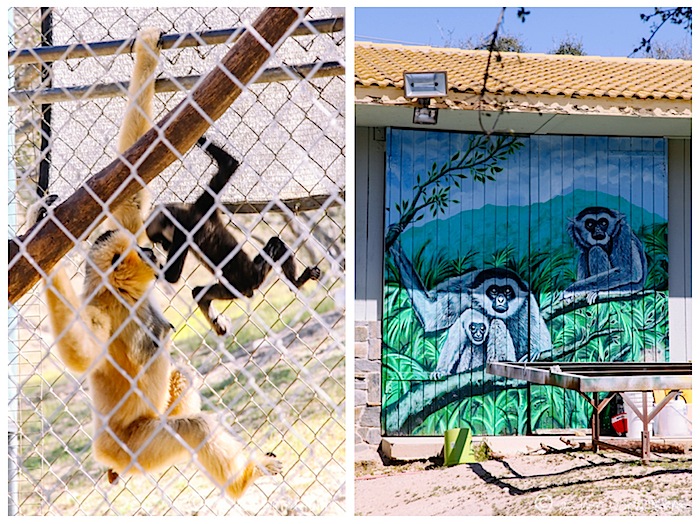
This is a female Northern White Cheeked gibbon and her offspring.
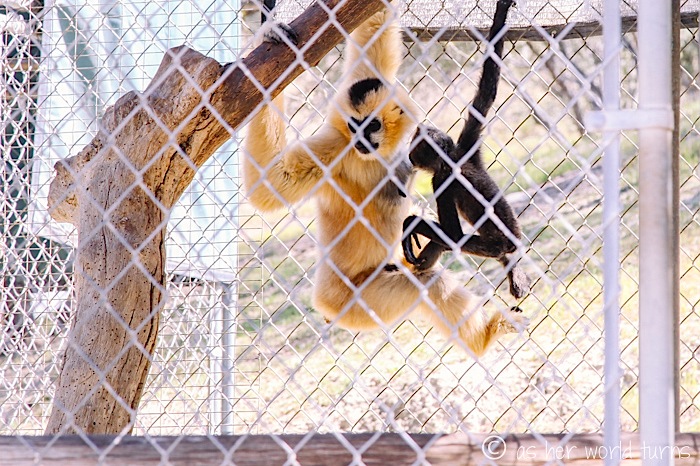
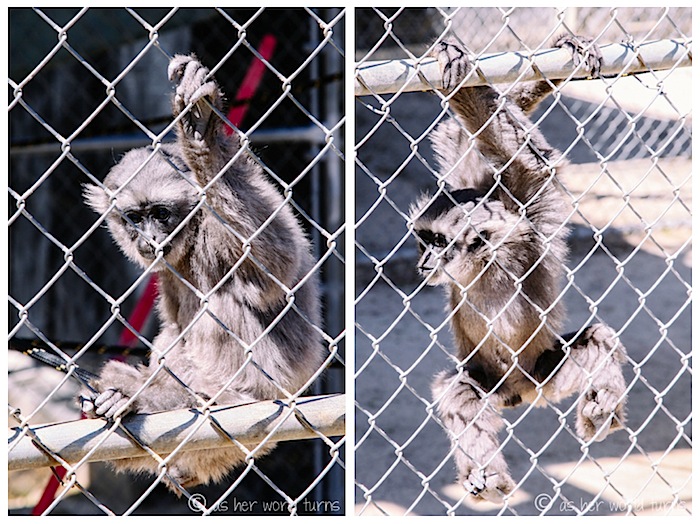
This little guy (above and below) is a Javan gibbon, also known as a ‘silvery gibbon’ or ‘grey gibbon.’
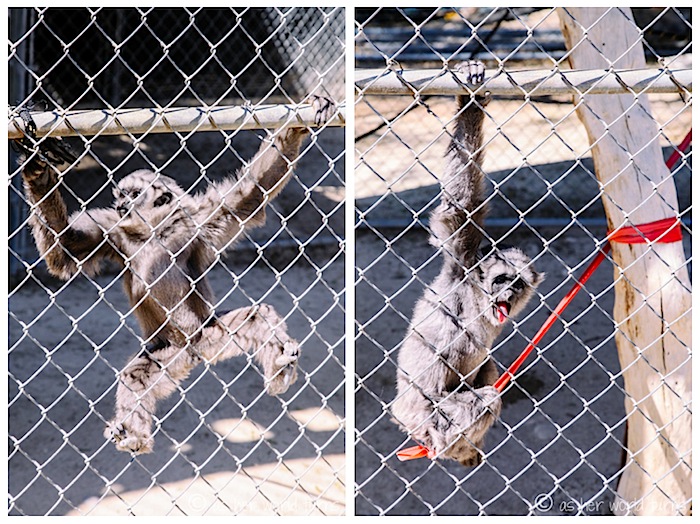
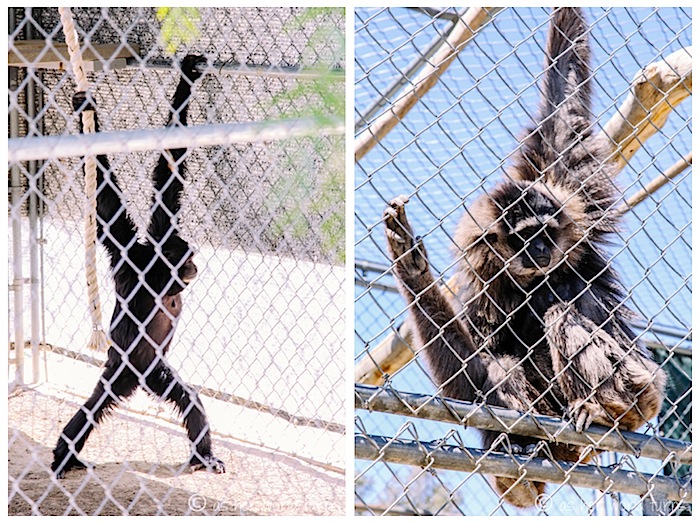
The guy above right and below left is an adult Javan gibbon, so the little youngster in the previous photos will look like this in a decade or two.
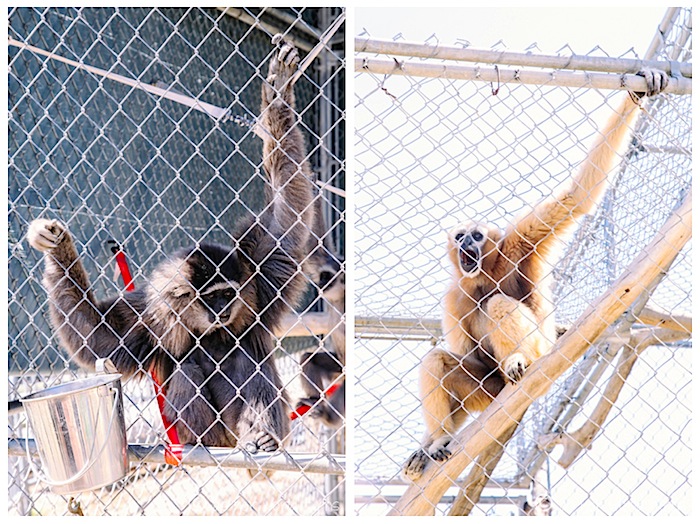
I believe the female above right and below is an Eastern Hoolock gibbon. She’s SO LOUD!
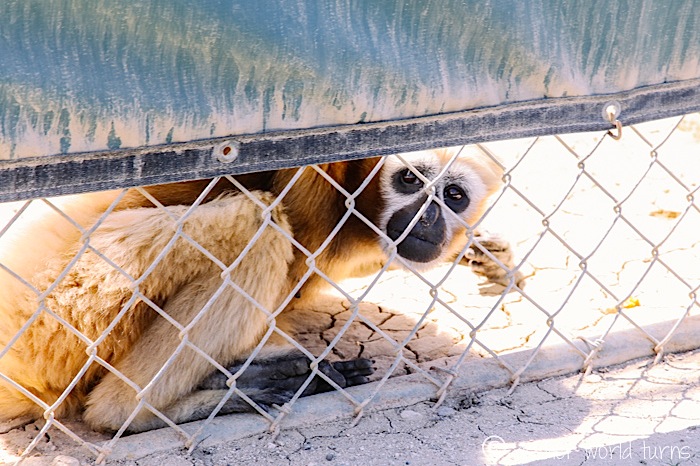
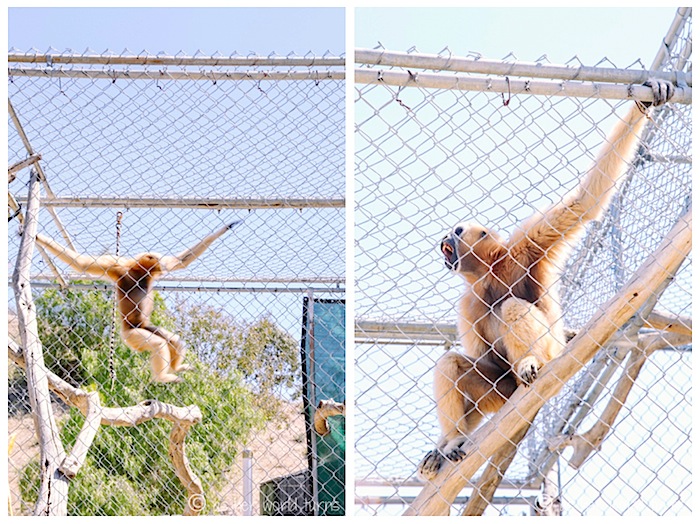
I leave you with this video I took of the gibbons. At times they rest and eat contentedly in their cages, and other times they go NUTS and swing ferociously from tree to tree (still within their large confines). They can swing from branch to branch for distances of up to 40 feet and as high as 35 mph! They make very loud noises and ‘talk’ to each other through these sounds. According to the Gibbon Center website, gibbons are referred to as the “songbirds of the primate family.” They mark their territory by vocalizing when traveling within the borders of where they live. The adult male and female sing a duet and their offspring join in. This can be heard up to two miles through the dense canopy rainforest.
Check it out:
Gibbons often live 30-35 years in the wild, or 40-50 years in captivity. In the last 18 months, the Gibbon Center has welcomed six new offspring. Their efforts to support this species is paying off.
If you are in Los Angeles and are curious about these creatures, it’s worth the drive to Santa Clarita (about 30 minutes north of LA) to spend a morning with them. If you make the 10am tour, let me know how it is!


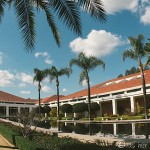

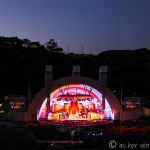
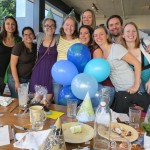

Goliath (the silver gibbon) is my favorite little gibbon.
Yes! He is adorable. And probably not so little anymore!